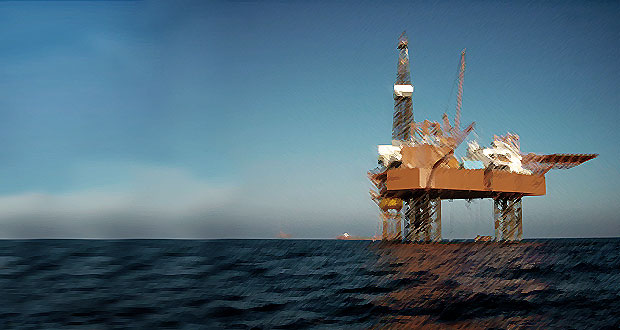Industry should embrace leadership role as society pushes toward low-carbon energy future


IOGP’s Iman Hill: To supply the world with energy at lower cost and lower emissions, industry will have to continue investing in digitalization, workforce development, standardization
By Stephen Whitfield, Associate Editor
Iman Hill is Executive Director of IOGP.
What do you see as some of the biggest challenges facing the drilling industry today?
Navigating a successful energy transition is the key issue for society, so it follows that it is material to the future of our industry.
As a result, we are seeing many companies rethinking their portfolio of assets, which will have a huge impact on the drilling industry. This means that even though we have an increasing world population and growing demand, we need to produce more energy at lower cost and lower emissions.
Those companies that pivot to low-carbon energy look to be building a sustainable business backed by increasingly influential ESG investment whilst trying to build trust from broader society. At the same time, this will require reskilling the workforce and investing in the engineering discipline to leverage existing expertise whilst also developing it.
However, at the same time, we must consider that oil and gas will remain very much a part of the energy mix for some time. So, for those choosing to continue to focus on hydrocarbons, they face the challenge of convincing investors, future talent and society that our industry is not just viable and critical but also a force for good in the transition.
And we must not forget what it will cost to make this happen. If our industry wants to keep up with demand, it will need to invest approximately $500 billion each year whilst facing rising capital costs. Since 2015, the oil and gas industry has underinvested, especially in the upstream business. Once the global spare capacity is depleted, there will be a need to reinvest to satisfy the needs of global customers. If supply is not managed effectively to meet demand, we will see a period of higher oil and gas prices. This will not be sustainable for our industry or society.
What roles can trade organizations like IOGP play in helping the industry navigate through these challenges?
Collaboration sits at the very heart of IOGP, bringing the industry together to share and implement best practices whilst advocating for policy that supports effective implementation. This is especially important for companies that don’t have the resources to create these or advocate in-house.
Given the criticism our industry is facing currently, there is a greater need for associations like ours to speak on behalf of the industry that oil and gas is critical to the well-being of the world’s immediate future. But we can also help industry make the transition. We know the public wants to see evidence that we are taking tangible action behind our words.
Our newly established Energy Transition Directorate aims to accelerate decarbonization through reducing flaring and venting, electrification, enhancing energy efficiency and supporting the scale-up of carbon capture, utilization and storage. A further work stream on clean hydrogen will also start up this year.
By 2025, we want to be able to tell the public that the industry has achieved zero flaring in our operations. We also want to demonstrate a tangible reduction in Scope 1 emissions, and by the end of the decade, report that we have achieved net-zero Scope 1 and 2 emissions.
And while the energy transition is rightly high on the world’s agenda today, let’s not forget that safety remains critical to the sustainability of our industry, and that is why it is a high priority for IOGP. We are constantly using industry data and expertise to help improve things like process safety and health management. Shared performance results can help move the industry toward collaborations that generate cutting-edge drilling solutions.
We also have a role to play in creating a diverse and inclusive workforce. Against the backdrop of our cyclical industry, declining popularity and climate concerns, we must unite to make the industry more attractive to the next generation. Talent scarcity could put our industry’s recovery and growth at risk.
Our Workforce Energy Task Force is guiding and accelerating the transformation of the industry by integrating and enhancing efforts to acquire new talent, build new capabilities and create diverse and inclusive work environments. We have a vision that by 2025, our member companies will have a more diverse and inclusive workforce, confident in their capabilities and ambitions to tackle our world’s energy challenges.
Your organization has been vocal about the need for the industry to be leaders in the energy transition. What do you think will be the biggest enablers for energy companies to take that leadership role?
How oil and gas companies choose to engage with the low-carbon energy transition will determine how they are viewed by shareholders, governments and the general public.
This is why taking a leadership role is critical. The biggest enabler for our industry is through building strategies for low-carbon business models that minimize carbon use while remaining profitable, whilst clearly articulating these strategies to markets and other stakeholders. Examples would be advocating for a transition from coal to gas and investing in infrastructure that enables electrification that results in lower GHG upstream operations.
Leveraging the latest technology has always been at the core of how our industry achieves excellence, and it is technology that will drive the transition and, in turn, the success of our industry. Another enabler is digitalization, which continues to transform every part of what we do, bringing in greater efficiency, lowering cost and reducing risk.
Digitalization will not only drive growth but will also help solve many challenges. It will help to attract talent, which leads to my final enabler. We need to develop a workforce strategy that restores the oil and gas as an attractive destination for younger talent concerned about the industry’s ESG footprint.
You’ve noted the efforts of some oil and gas companies to invest in renewable energy, such as biofuels, solar and wind energy. How do you see drilling contractors fitting into the low-carbon future?
More and more, we are seeing upstream operators and contractors diversify their portfolios. Add to this decarbonization activity, and we begin to see where contractors can add their expertise and benefit commercially in this new model.
By diversifying, contractors will be able to tap into existing markets where they have an established presence. As end markets expect to grow, they are already well-positioned with industry knowledge and existing relationships that not only allow them to move fast but also make them a preferred partner. Indeed, service companies will be key in delivering low-carbon solutions of the future, including carbon capture and storage technology (CCUS), hydrogen and decarbonization projects.
Project management and digital skills in the drilling community rank amongst the best in the world and are easily transferable. And let’s not forget that our industry has amongst it world experts in HSSE. Again, the knowledge of managing risk will prove vital for the sustainability and reputation of the renewables industry.
Finally, I think it’s safe to say that drilling contractors are used to moving regularly between locations – going to where the next challenge is. Our people are unique in this – knowledgeable, adaptable and exportable.
What challenges do you think the industry faces in collaborating with government and regulatory entities, and what do you think are the best ways to address those challenges?
Although the world will be using oil and gas for decades to come, it will not be as we currently know it. Our customers, which include governments, are demanding not only access to energy but also energy that is clean, affordable and reliable. We have a key role in helping these governments achieve their nationally determined commitments to climate change.
Our industry is already working on these challenges as it acts to decarbonize operations and lower its emissions, but this will have to be in partnership with customers, governments and civil society. Governments will need to offer the right policy environments, for example, to support faster adoption of CCUS, in order to accelerate the path our industry is beginning to take to get to net-zero emissions by 2050.
At the same time, our industry and regulators share the same goal of striving for zero harm to people and the environment, so we must continue to work in partnership.
Finally, when speaking to governments and regulators, it makes sense to present a unified industry voice. This not only makes it easier for governments to listen, but it also creates a greater position of influence for our industry.
IOGP has been committed to industrywide standardization in areas such as offshore structure design and procurement of equipment. Where else do you think the industry would benefit from standardization? How can standardization among operators help drilling contractors when their rigs go from one operator to another?
IOGP’s Joint Industry Program JIP33 is a good example of standardization. JIP33 is delivering specification standards for equipment and components, the building blocks that will help standardize facilities.
By standardizing the specifications used for procuring equipment, the supply chain can become better, faster and cheaper through reductions in cost and schedule in major capital projects. An independent third-party study has shown a 75% schedule reduction and a 50% decrease in costs.
We haven’t yet begun to see the impact from adopting JIP33 at scale, although notably, Petrobras is applying JIP33 standards in its contracting and procurement process for all of its FPSOs.
Standardization will also help to establish the foundations for automation and digital transformation by utilizing machine learning, artificial intelligence and advanced data analytics. In order to be successfully implemented, we need to have common data standards, and this is part of the work we do in the Digital and Information Standards Subcommittee.
For drilling contractors, standardized well designs and hardware – like trees – will improve their efficiencies. Drilling equipment itself is not in the scope for JIP33, which is concerned with procurement standards. This is because their volume is relatively low. However, there are benefits in standardizing the consumables used in drilling operations, such as casing and tubulars.
The industry is making huge strides in adopting automated systems and machine learning. How do you think these technologies are changing the way we operate?
In the drilling process, automation based on standard designs will help reduce the need for people at the drill center and, therefore, lower safety risks. Condition monitoring of critical equipment based on machine learning will help in predictive maintenance of our assets, preventing undesirable downtime. It also opens opportunities for alternative contracting models. In projects, it provides opportunities for verifying designs against industry standards, ensuring compliance with the requirements.
And then there is data. As an industry, we can collect remarkable amounts of data while drilling. We now have platforms that enable consolidation, comparison and analysis of data in real time from many different sources and locations.
Taken together, our increasingly automated systems and their digital twins enable us to achieve more with less, which means better performance with less risk.
What do you see as the next step changes in improving the safety performance of wells throughout their full lifecycle?
Our key common risk is obviously in the well control or source control domain. While we know IADC is working many strands on this, maybe one of the more visible parts, certainly for the front line, is the WellSharp program, which touches many parts of our industry.
IOGP’s Report 476 addresses this, and we look forward to IADC’s close engagement during our planned review in 2022. At IOGP, we want to ensure that our efforts on the competency front closely align with IADC’s.
What are some of the continuing impacts the COVID-19 pandemic is having on how our industry operates?
COVID-19’s impact on staffing levels due to illness and isolation requirements, and resulting supply chain issues, are easy to recognize. However, it is also responsible for an increase in mental health issues, and we need to ensure our workplaces provide support in this area.
We published an information sheet to share the knowledge of the oil and gas industry’s health experts to address these risks and challenges. And, to prepare for the next pandemic, we have created pandemic management guidelines to assist companies in updating their business continuity plans with what has been learned from COVID.
We continue to put out resources to help our industry harmonize COVID responses. The latest was an update to the vaccine position statement, which examines the dilemmas around vaccine mandates. Another key document was the pandemic management guidelines, which helps companies update their business continuity plans with what has been learned from COVID. DC




